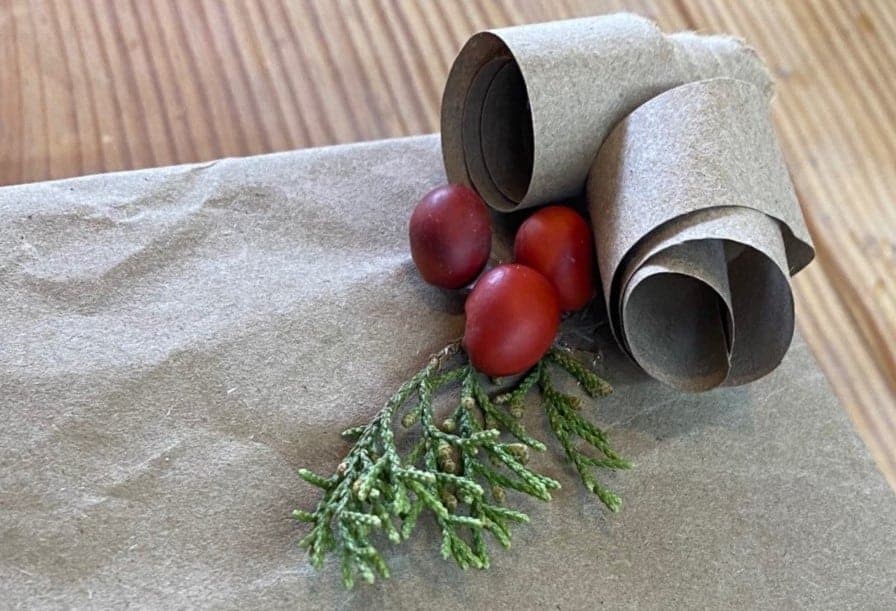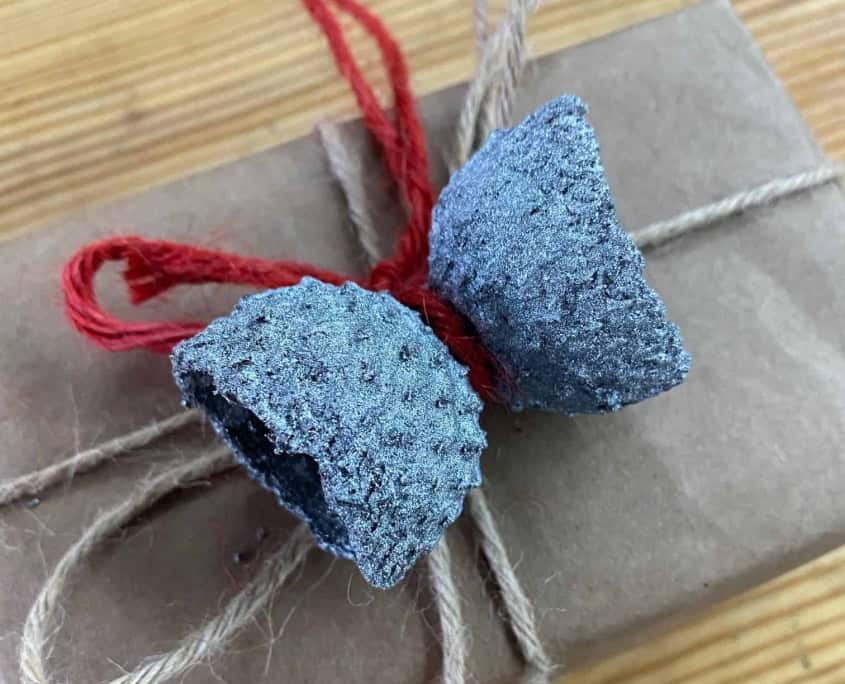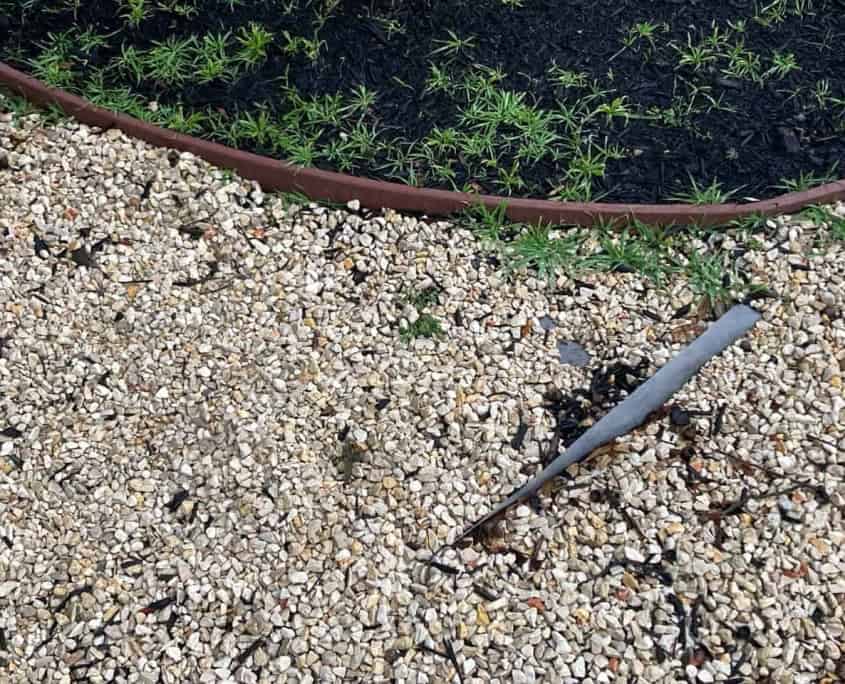5 Ideas: Natural Decor For Christmas
Spread cheer not waste with these five natural Christmas decor and gift tips.
We all want our holiday decorations and gifts to make a big impact — but not on the environment. Why not bring the festive cheer right into your own Austin landscape? From eco-friendly wrapping paper to repurposing natural elements from your yard as Christmas decor, here are Maas Verde’s top recommendations for sustainable holidays at home.
1. Sustainable Gift Wrap with Natural Accents
Make attractive natural decor for Christmas with materials you can find all around you — common fruits, native plants, or brown paper!

(Photo/Marc Opperman)
Maas Verde’s Marc Opperman trims his holiday gifts with bur oak caps, bright red mountain laurel beans, and Ashe juniper cuttings.
You can even dye your twine ribbon with Cochineal. You can collect this bright red dye from cacti, where you’ll see it as the white deposits on the plant. It’s one of the world’s oldest and strongest natural decorative dyes — which you can use if you’re not too grossed out by the fact that it’s the crushed bodies of parasitic insects!

2. Choose a Living Tree (Don’t Cut it Down!)
If you have natural tree decor, you should have a natural tree. But why kill it?
Maas Verde project manager John Harris recommends a 30-gallon Eastern red cedar or Ashe juniper. These native trees can resemble the traditional spruce tenenbaum and diffuse festive household aromas.
Check your local nursery for availability. And when your tree outgrows its pot, just take it outside and plant it!
3. “Deck the Halls with Ag-a-rita!”
Ditch the tinsel and artificial wreaths in favor of native plant holiday garlands.
Possumhaw holly is an obvious choice for a Texas Christmas wreath, and deep-green, pointy-leafed Agarita can add a festive touch. Its berries even ripen bright red!
4. Send Eco Friendly Holiday Cards
Plenty of choices exist for either option. Maas Verde recommends Native American Seed’s Texas Wildflower Mix Gift Packets. They’re reasonably priced and easy to apply to any garden bed.
Or, check out OneTreePlanted and their options for e-cards that sponsor tree plantings.
5. Recycle or Donate Your Tree
Opting for a traditional, cut tree brings a traditional cheer that’s palpable. The trees do provide wildlife habitat during their growing period, and boost local economies.
But when you’re done with it, either cut it for firewood yourself, compost it, or recycle it into mulch through the City of Austin.


 It’s only a xeriscape if it uses native species.
It’s only a xeriscape if it uses native species. 
